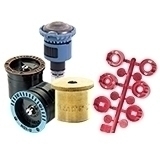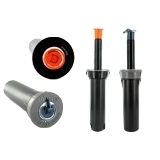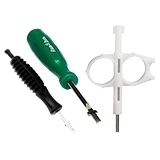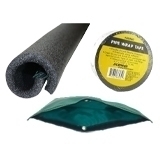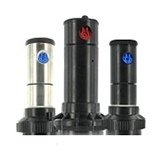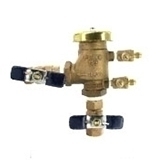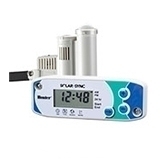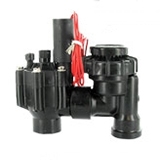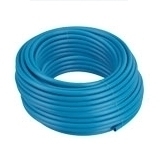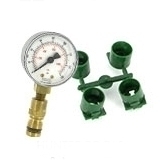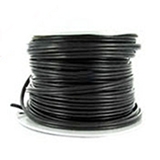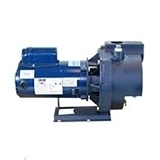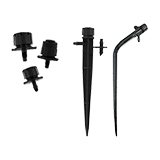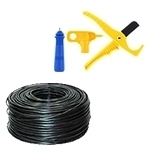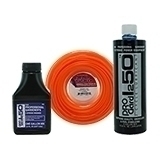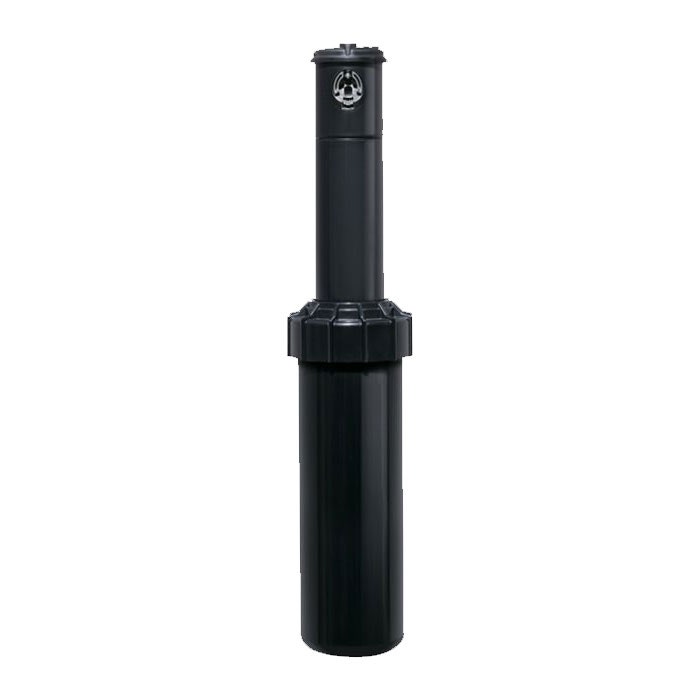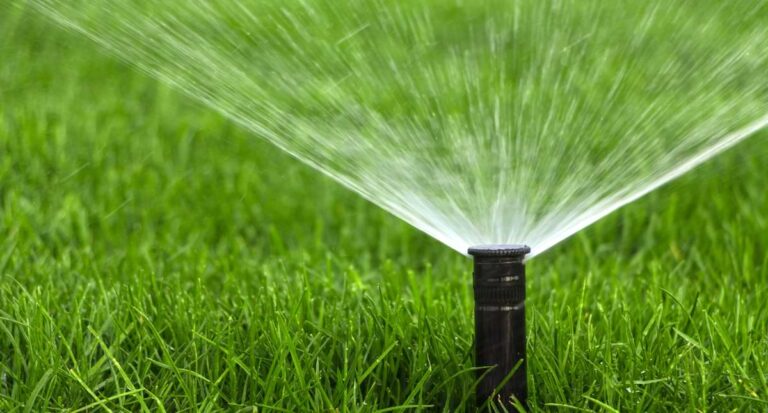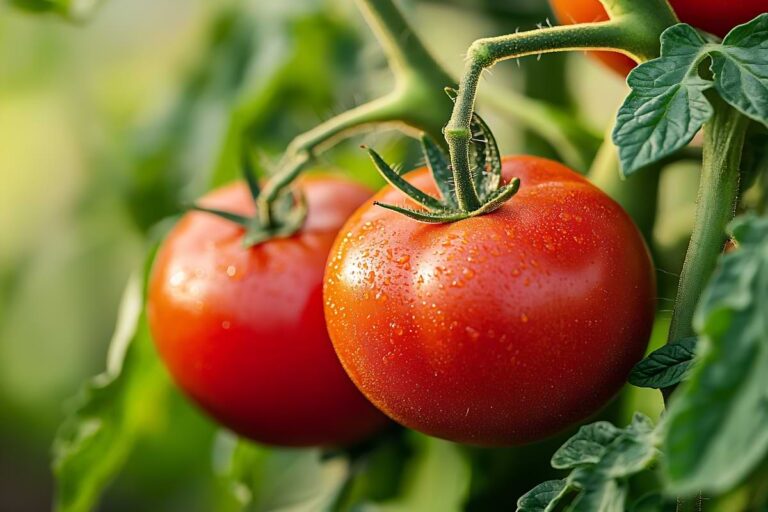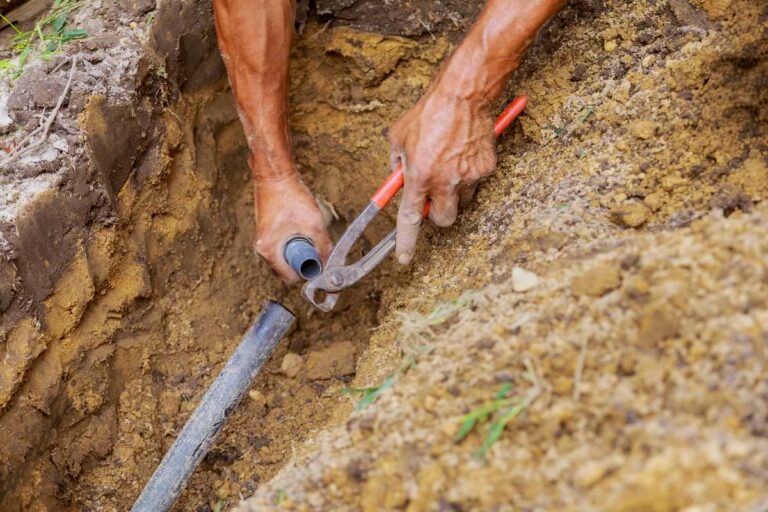Table of Contents: Vegetable Garden Drip Irrigation Guide
Drip Irrigation Vegetable Garden Guide
Drip irrigation for vegetable gardens solves common watering problems such as uneven soil moisture, wilting plants, and wasted water. Sprinklers and hand-watering can be inconsistent, leaving roots too dry or too wet.
Drip systems deliver water directly to plant roots, reduce waste, and make gardening easier for raised beds and open plots alike. Here’s what you need to know to set up an efficient drip irrigation system.
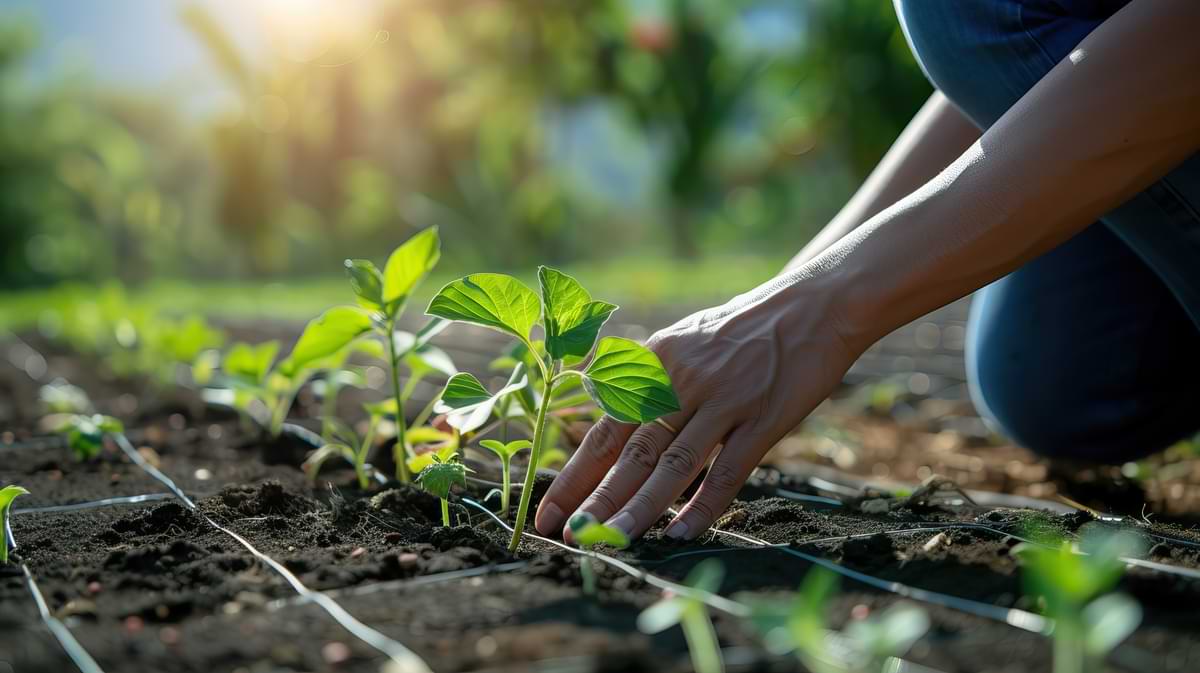
Why Choose Drip Irrigation for Vegetables?
Vegetable plants need steady, even moisture to produce flavorful harvests. Uneven watering can lead to problems such as split tomatoes, bitter lettuce, or stressed root crops. Drip irrigation solves these challenges by delivering water slowly and directly to the soil around the base of plants.
The benefits are clear:
- Water Efficiency: Drip systems use up to 50% less water than overhead sprinklers.
- Healthier Plants: Because leaves stay dry, the risk of fungal diseases decreases.
- Fewer Weeds: Water is targeted only where you want it, not in the pathways.
- Stronger Yields: Consistent soil moisture helps vegetables grow evenly and taste better.
Raised Garden Drip Irrigation
Raised beds are popular for vegetable gardening because they improve soil quality, reduce compaction, and make tending crops easier. Pairing raised beds with drip irrigation takes the benefits even further.
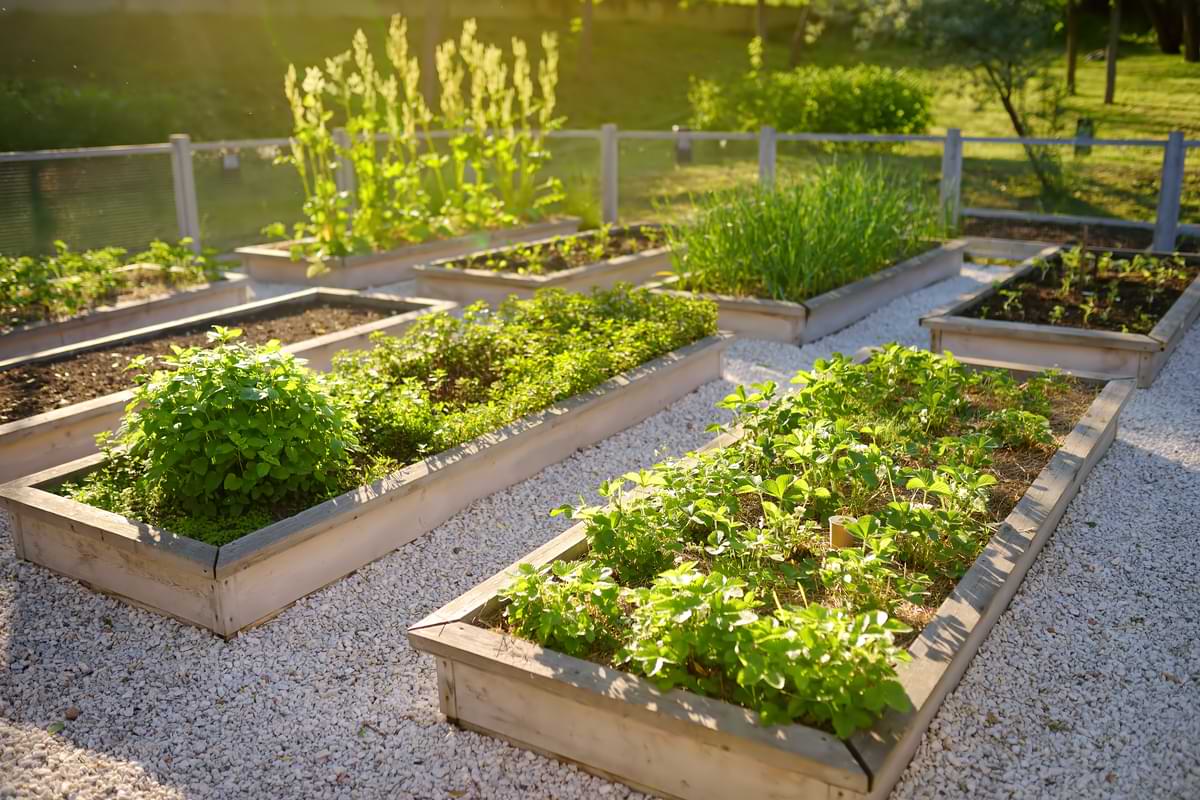
Here’s why raised bed drip irrigation is so effective:
- Customizable Layout: Drip lines can be arranged to match your planting rows, grids, or clusters.
- Even Coverage: Each plant receives just the right amount of water, so you can avoid soggy or dry spots in your garden.
- Convenience: Many raised bed drip kits connect directly to a garden hose and can be automated with a timer.
A basic setup usually includes a mainline hose, drip tubing or emitter lines, connectors, and a timer. Once installed, you simply turn on the system (or let the timer handle it), and your vegetables get a slow, steady drink.
Setting up Drip Irrigation for Vegetable Gardens
Drip irrigation makes watering your vegetable garden simple, efficient, and precise. This section walks you through the key steps to plan, install, and connect your system so that every plant gets the right amount of water.
1. Plan Your Layout
Map out where your vegetables are planted—rows, grids, or clusters—and design drip lines to match. A clear layout helps ensure every plant receives consistent water coverage.
Take time to measure your beds so you know how much tubing you’ll need. Planning ahead also makes it easier to expand your system later if you decide to add more crops.
2. Install the Mainline
Lay down a supply hose along one edge of your bed or garden plot. This serves as the backbone of your drip irrigation system, feeding water into the smaller lines that reach your plants.
Secure the hose with stakes to keep it in place. Position it so it’s easy to connect to your water source without running across walkways.
3. Run Emitter Tubing

Connect drip lines or soaker tubing from the mainline to water each row or plant group. Position emitters near the base of plants so water goes directly to the roots.
For raised beds, run the lines lengthwise down each row for even coverage. Be sure the tubing sits flat on the soil so water doesn’t pool in uneven spots.
4. Add a Filter and Pressure Regulator
Filters and pressure regulators ensure consistent water flow and prevent clogs in your drip lines. Filters keep out debris, while regulators protect your system from excessive water pressure.
Most drip systems work best with low pressure, so a regulator is essential for efficiency. Installing these parts at the start of your system helps it last longer and perform reliably.
5. Use Automated Timers for Drip Irrigation
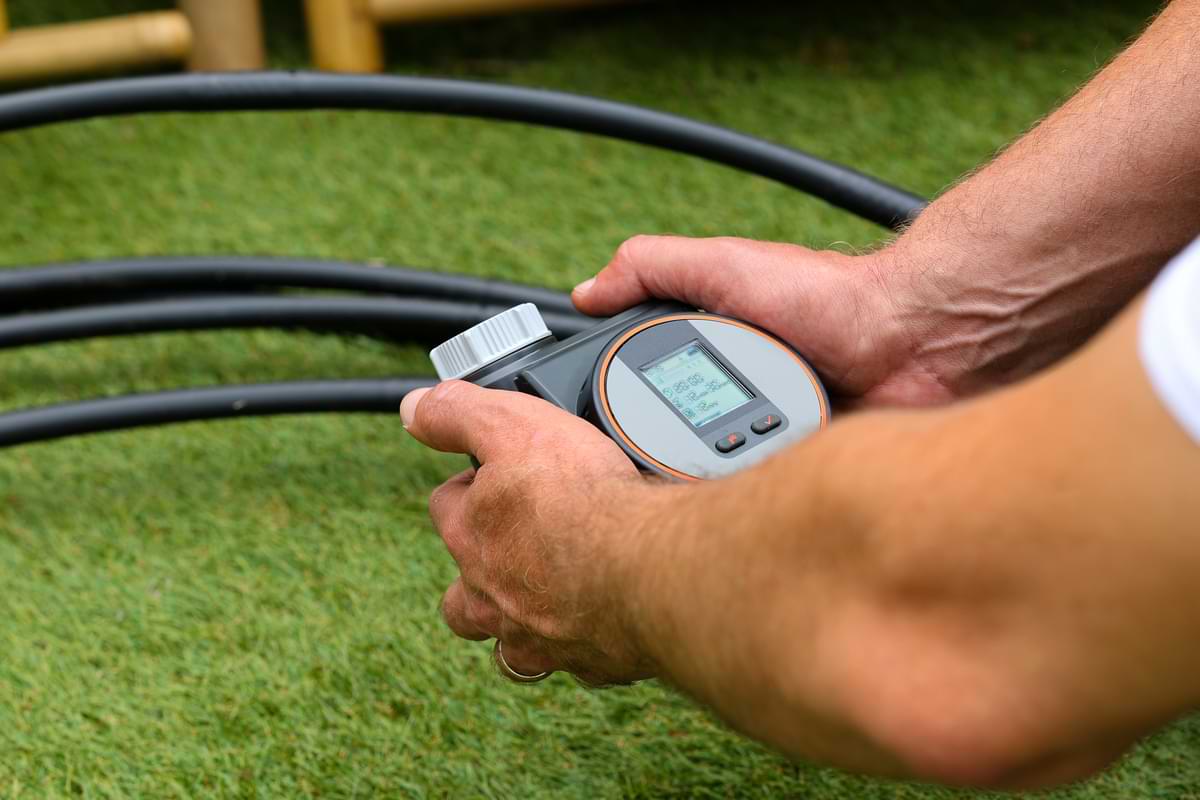
A simple digital timer makes watering hands-free and consistent. With automation, you can keep soil moisture steady—even when you’re away from the garden.
Timers can be programmed to water at the best times of day, usually early morning. They also prevent overwatering by shutting the system off after the right duration.
Tips for Drip Irrigation Success
Even the best drip system needs regular care to perform at its best. These practical tips will help you maintain consistent soil moisture, prevent clogs, and ensure a healthy, productive garden all season long.
- Water Early: Water early in the morning to minimize evaporation.
- Mulch: Use mulch to help soil retain moisture.
- Check Emitters: Check emitters regularly to make sure they’re not clogged.
- Adjust Schedules: Adjust watering schedules based on the season—hot summers may require daily irrigation, while cooler months need less.
Grow Healthy Crops with Drip Irrigation for Vegetable Gardens
For vegetable gardeners—especially those working with raised beds—drip irrigation is the gold standard. It conserves water, reduces labor, and gives your crops the consistent moisture they need to thrive. By setting up a drip system, you’ll spend less time hauling hoses and more time harvesting crisp greens, juicy tomatoes, and sweet carrots from your garden.
FAQs for Drip Irrigation for Vegetable Gardens
Is drip irrigation good for vegetable gardens?
Yes, drip irrigation is ideal for vegetable gardens. Drip irrigation systems deliver water directly to plant roots, conserves water, reduces weeds, and helps prevent diseases by keeping leaves dry. It’s especially effective for raised beds and dense planting layouts.
What is the 30-30 rule for drip irrigation?
The 30-30 rule means watering your plants with 30 minutes of drip irrigation, then waiting 30 minutes before repeating. This allows water to soak into the soil gradually, promoting deep root growth and reducing runoff. Perform this watering routine two to three times per week.
How long to leave on drip irrigation for a vegetable garden?
Drip irrigation duration depends on soil type, plant size, and weather. Most vegetable gardens benefit from 20–60 minutes per session, once or twice daily during hot weather, ensuring the soil stays evenly moist without waterlogging.
If you want to stay up-to-date on the latest Sprinkler Warehouse news and make the most of all of our one-of-a-kind promotions, join the Irri-Gator community today. Happy watering, Irri-Gators!


